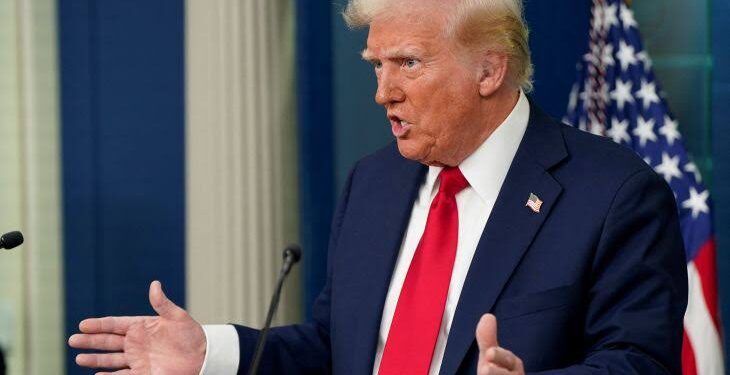The White House has announced a 25% tariff on imports from Canada and Mexico, along with a 10% tariff on Chinese goods. These tariffs are not based on traditional trade disputes. Instead, they aim to pressure Mexico and Canada into strengthening border security and cracking down on drug and human trafficking. The tariffs come as part of Trump’s broader strategy to use economic measures for national security concerns. He argues that both neighboring countries have not done enough to address these issues. The move has sparked strong reactions from global markets and trade partners.
Mexico and Canada Respond to Pressure
Following direct talks with Trump, Mexico’s President-elect Claudia Sheinbaum and Canada’s Prime Minister Justin Trudeau agreed to new security commitments. Sheinbaum pledged to station 10,000 Mexican soldiers at the US-Mexico border. Trudeau promised to appoint a “Fentanyl Czar” and officially designate drug cartels as terrorist organizations.
With these pledges, Trump agreed to delay the 25% tariffs for 30 days. However, the 10% tariff on Chinese imports took effect on Tuesday. He emphasized that further negotiations would determine if Canada and Mexico could avoid the harsher economic penalties.
Trump Justifies the Tariffs
Trump took to social media to defend his decision, framing it as a necessary move to protect Americans. He stated that ensuring the safety of US citizens is his top priority. Trump also expressed satisfaction with the initial commitments from Canada and Mexico.
He signaled that if a final economic deal is reached with Canada, the tariffs could be adjusted or lifted. However, he did not provide details on what a successful agreement would look like. The pause on the Canadian tariffs gives both sides time to negotiate a resolution.
Impact on Trade and Consumers
Canada, Mexico, and China account for more than 40% of total US trade. The value of goods exchanged between these countries and the US exceeds $2 trillion annually. Any disruption in trade could have widespread effects on businesses and consumers.
These Trump’s tariffs could raise prices on key imports, including produce, construction materials, electronics, and automobiles. Businesses that rely on supply chains from these countries may face higher costs. These increases could be passed on to American consumers.
China, in particular, remains a major supplier of technology and manufactured goods. The 10% tariff could affect the cost of computers, phones, and industrial equipment. Companies that depend on Chinese imports may need to adjust their pricing or seek alternative suppliers.
What Comes Next?
With a 30-day window to reach a broader deal, Canada and Mexico will need to prove their commitment to enhanced security measures. If Trump is not satisfied with their efforts, the postponed 25% tariffs could still go into effect.
For now, businesses and markets remain on edge, waiting to see how negotiations unfold. The impact of the Chinese tariffs is already being felt, and analysts predict more economic turbulence if further tariffs are imposed.
Trump’s approach marks a shift in how tariffs are used in international relations. Whether this strategy will lead to lasting security agreements or prolonged economic uncertainty remains to be seen.
Related Stories:
Trump Announces 25% Tariffs on Canada and Mexico Imports
Trump Imposes Tariffs on Colombia Over Migrant Deportation Flights Return
















